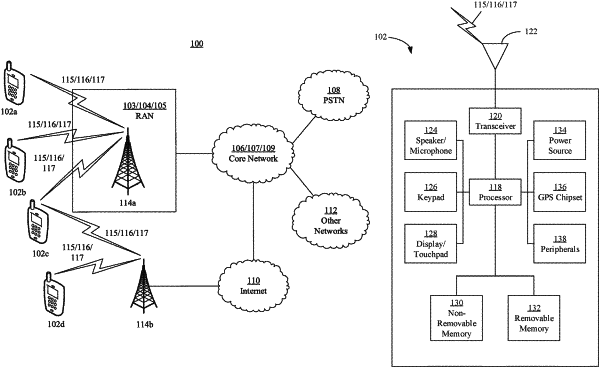| CPC H04L 5/0007 (2013.01) [H04L 5/0053 (2013.01); H04L 5/0094 (2013.01); H04L 27/26025 (2021.01); H04L 27/2646 (2013.01); H04W 74/004 (2013.01); H04W 74/0841 (2013.01)] | 14 Claims |

|
1. A method implemented by a wireless transmit/receive unit (WTRU), the method comprising:
determining an operating band of the WTRU from among a plurality of frequency bands within a system bandwidth of a wireless system, wherein each of the plurality of frequency bands is associated with a respective set of signal structures;
determining the set of signal structures that is associated with the determined operating band, wherein the set of signal structures includes (1) a first signal structure including a first subcarrier spacing for a synchronization signal (SS) and (2) a second signal structure including a second subcarrier spacing for the SS, and the first subcarrier spacing is different than the second subcarrier spacing;
receiving the SS using a set of resources having one of the first subcarrier spacing of the first signal structure or the second subcarrier spacing of the second signal structure;
receiving and decoding a first physical channel transmission, which includes a master information block (MIB), using a set of resources having a same subcarrier spacing as the set of resources used for receiving the SS, wherein the MIB includes information indicating a third signal structure of a second physical channel transmission;
receiving and decoding the second physical channel transmission, which includes a system information block (SIB), using a set of resources having a third subcarrier spacing for the second physical channel transmission, wherein the third subcarrier spacing is based on the third signal structure and the SIB includes information indicating a fourth signal structure of a physical random access channel transmission; and
sending the physical random access channel transmission using a set of resources having a fourth subcarrier spacing for the physical random access channel, wherein the fourth subcarrier spacing is based on the fourth signal structure.
|